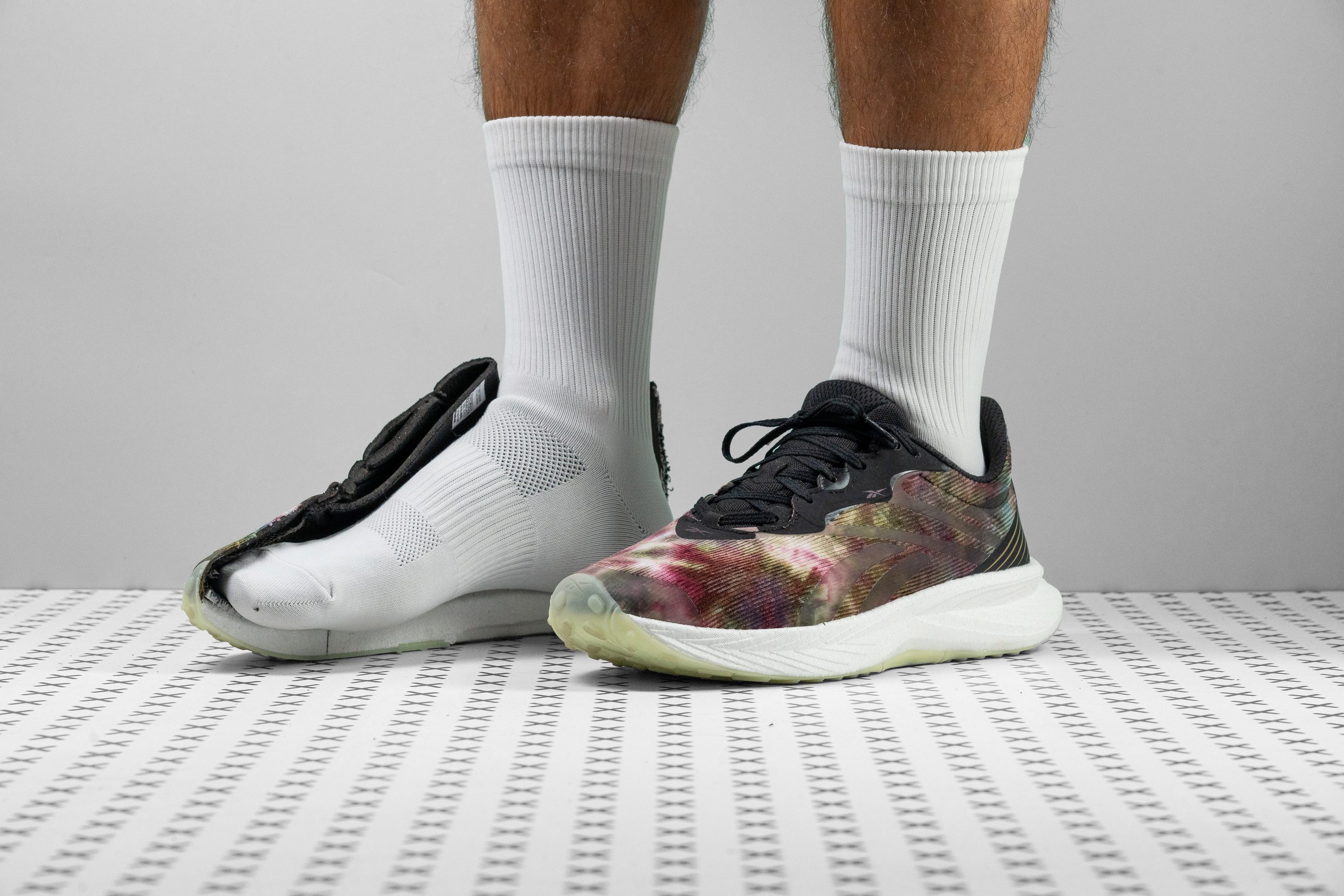Our verdict
Pros
- Affordable
- Impressively stable
- Exceptionally well-suited for cold weather
- Superior grip on dry roads
- Eye-catching colorways available
- Lightweight
- Environmentally friendly
- Versatile across a variety of distances
Cons
- Poor breathability
- Some break-in period needed
- 6-mm drop may be too low for some runners
Audience verdict
Comparison
The most similar running shoes compared
+ + Add a shoe | |||||
|---|---|---|---|---|---|
| Audience score | 87 Great! | 85 Good! | 79 Good! | 87 Great! | |
| Price | $110 | $65 | $85 | $125 | |
| Pace | Daily running | Daily running | Daily running | Daily running | |
| Shock absorption | - | Moderate | Moderate | Moderate | |
| Energy return | - | Low | Moderate | Low | |
| Traction | - | Low | High | Moderate | |
| Arch support | Neutral | Neutral | Neutral | Neutral | |
| Weight lab Weight brand | 9 oz / 254g 9.4 oz / 266g | 9.7 oz / 275g 10.7 oz / 303g | 8.4 oz / 238g 9.1 oz / 258g | 8.2 oz / 232g 8.5 oz / 241g | |
| Lightweight | ✗ | ✗ | ✓ | ✓ | |
| Drop lab Drop brand | 6.0 mm 8.0 mm | 9.4 mm 10.0 mm | 7.2 mm 8.0 mm | 6.4 mm 6.0 mm | |
| Strike pattern | Mid/forefoot | HeelMid/forefoot | Mid/forefoot | Mid/forefoot | |
| Size | True to size | True to size | Slightly small | True to size | |
| Midsole softness | Balanced | Balanced | Balanced | Balanced | |
| Difference in midsole softness in cold | Small | Small | Small | Big | |
| Toebox durability | Bad | Bad | - | Good | |
| Heel padding durability | Decent | Bad | - | Decent | |
| Outsole durability | Good | Decent | - | - | |
| Breathability | Warm | Moderate | Warm | Moderate | |
| Width / fit | Medium | Wide | Narrow | Narrow | |
| Toebox width | Medium | Medium | - | Narrow | |
| Stiffness | Stiff | Moderate | Moderate | Moderate | |
| Torsional rigidity | Flexible | Flexible | Flexible | Moderate | |
| Heel counter stiffness | Flexible | Moderate | Flexible | Flexible | |
| Heel lab Heel brand | 30.2 mm 27.0 mm | 31.2 mm 33.0 mm | 32.2 mm | 30.4 mm 26.0 mm | |
| Forefoot lab Forefoot brand | 24.2 mm 19.0 mm | 21.8 mm 23.0 mm | 25.0 mm | 24.0 mm 20.0 mm | |
| Widths available | Normal | NormalWide | NormalWideX-Wide | Normal | |
| Orthotic friendly | ✓ | ✓ | ✓ | ✓ | |
| Season | All seasons | All seasons | Winter | All seasons | |
| Removable insole | ✓ | ✓ | ✓ | ✓ | |
| Ranking | #167 Top 45% | #199 Bottom 46% | #325 Bottom 13% | #160 Top 43% | |
| Popularity | #310 Bottom 17% | #125 Top 34% | #170 Top 46% | #89 Top 24% |
Who should buy
The Reebok Floatride Energy 5 is a real treat for certain types of runners, but not for everyone. We believe it's an ideal match for those who:
- Enjoy a running shoe that offers a firm-yet-cushioned ride.
- Are on the hunt for a lightweight daily trainer.
- Reside in extremely cold climates and dislike how most shoes become a brick in such conditions.
- Are looking for an affordable shoe that can handle a wide variety of runs.
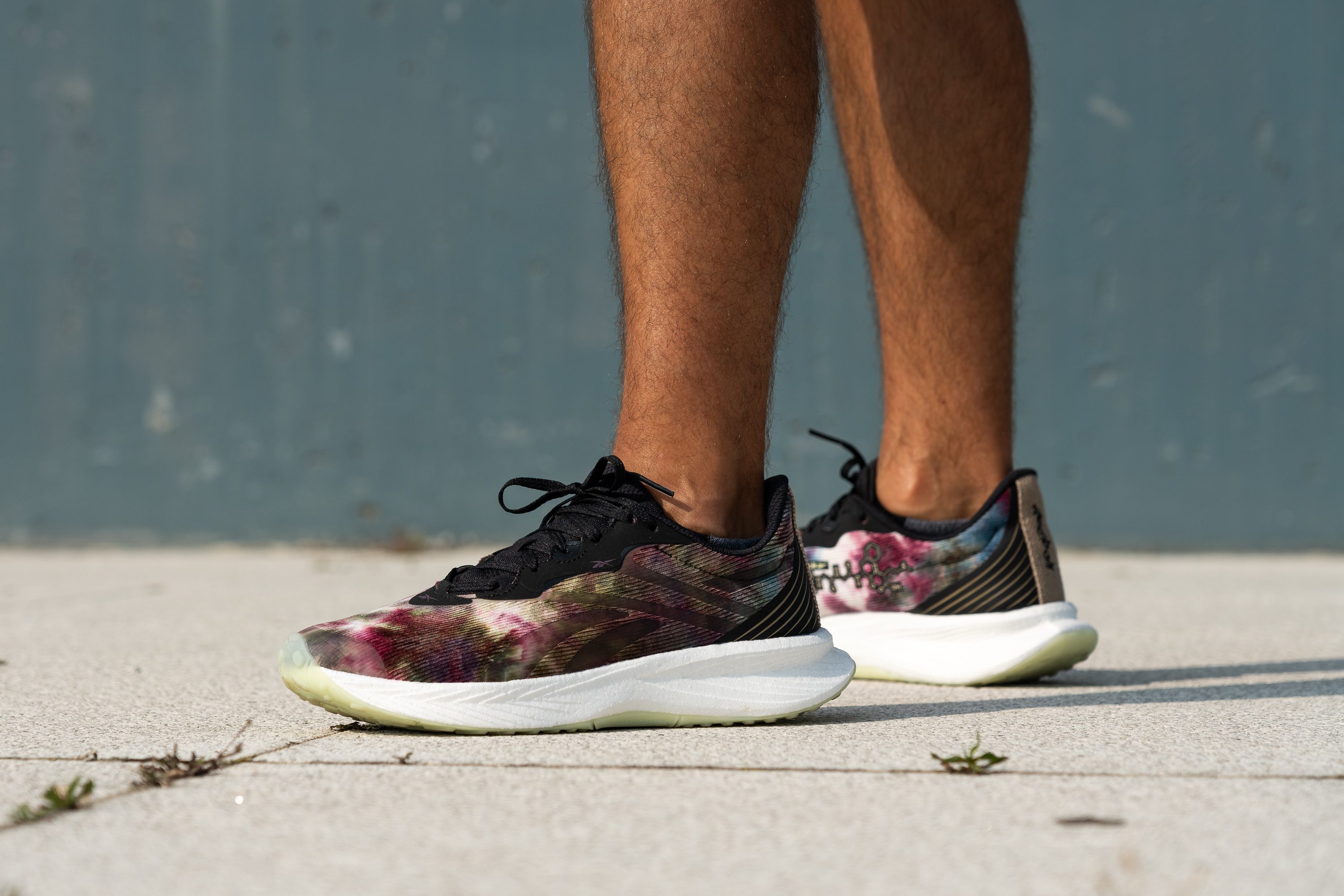
Who should NOT buy
The Reebok Floatride Energy 5, as a daily trainer, is designed with a unique approach that may not suit everyone. We think fans of plush midsoles, for example, should steer clear of this model—it's decidedly firm underfoot. If a softer experience is what you're after, we suggest considering the ASICS Novablast 3.
Runners who prefer a high heel-to-toe drop or require shoes with superior breathability might also want to look elsewhere. In our experience, two excellent alternatives that tick both boxes are the ASICS Gel Excite 9 and the Nike Air Winflo 9.
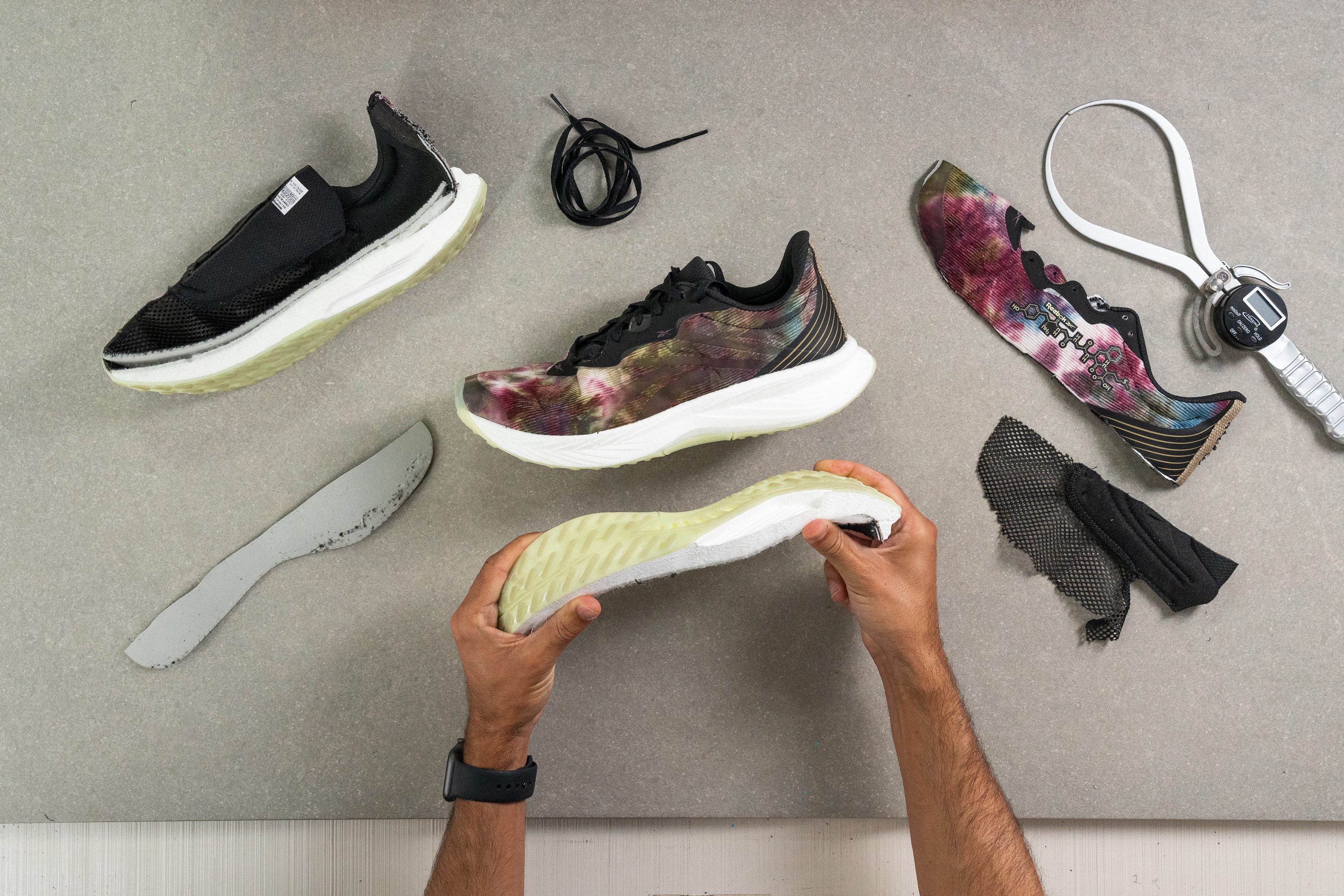
Cushioning
Heel stack
Using our caliper, we found the heel height to be 30.2 mm.
While this may be slightly less than the current average for daily trainers, it's still enough for handling most runs, possibly with the exception of the very longest ones.
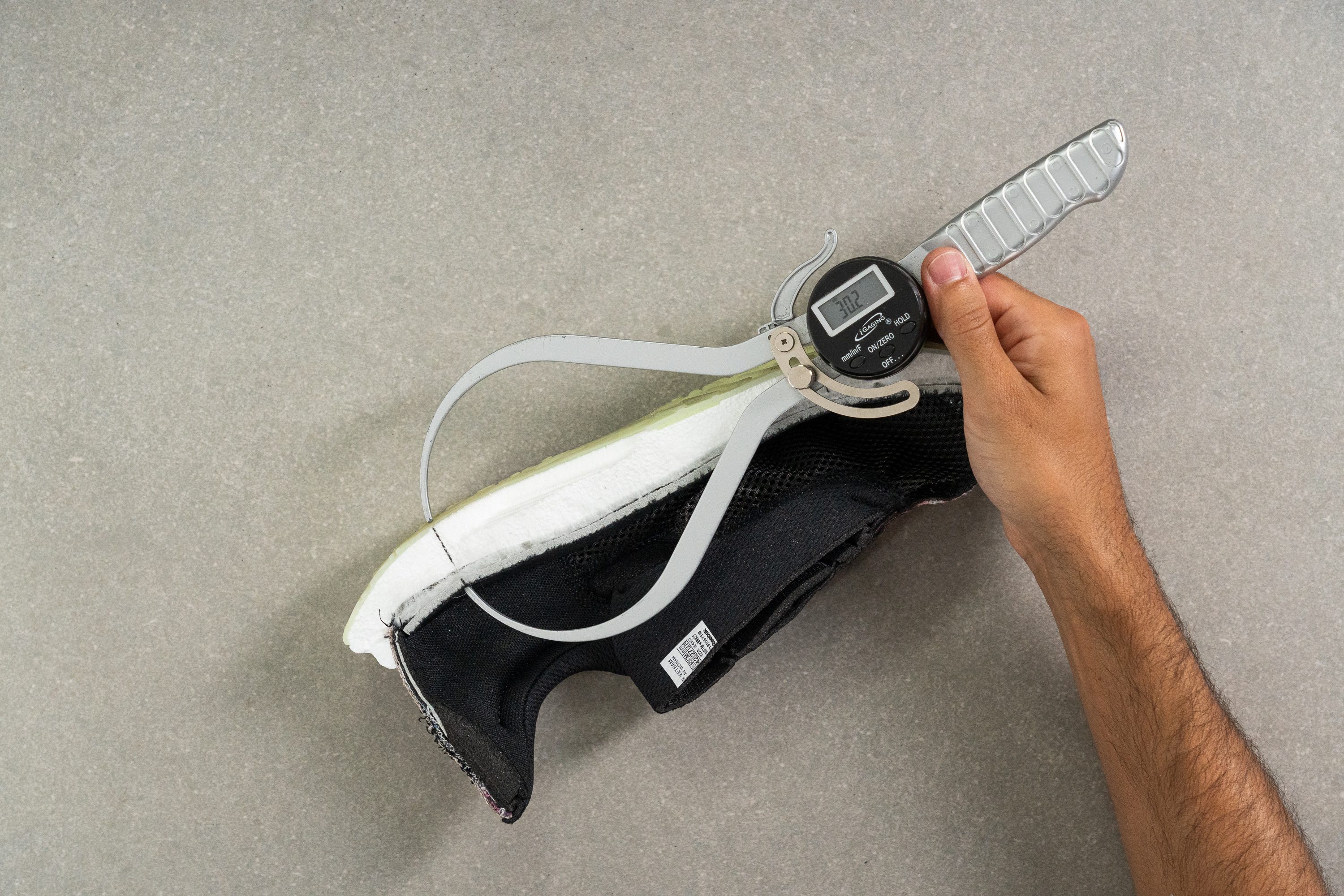
| Floatride Energy 5 | 30.2 mm |
| Average | 34.8 mm |
Forefoot stack
The forefoot follows a similar trend. Measuring at 24.2 mm, it sits a bit below the average stack height yet provides a substantial amount of foam for a daily trainer.

| Floatride Energy 5 | 24.2 mm |
| Average | 26.2 mm |
Drop
Subtracting the forefoot from the heel, we end up with a 6-mm heel-to-toe drop. This is notably different from Reebok's official 8 mm, and it positions the shoe as a better fit for midfoot or forefoot strikers rather than heel strikers.
For those who frequently encounter Achilles problems, this lower-than-expected drop could potentially be a disappointment.
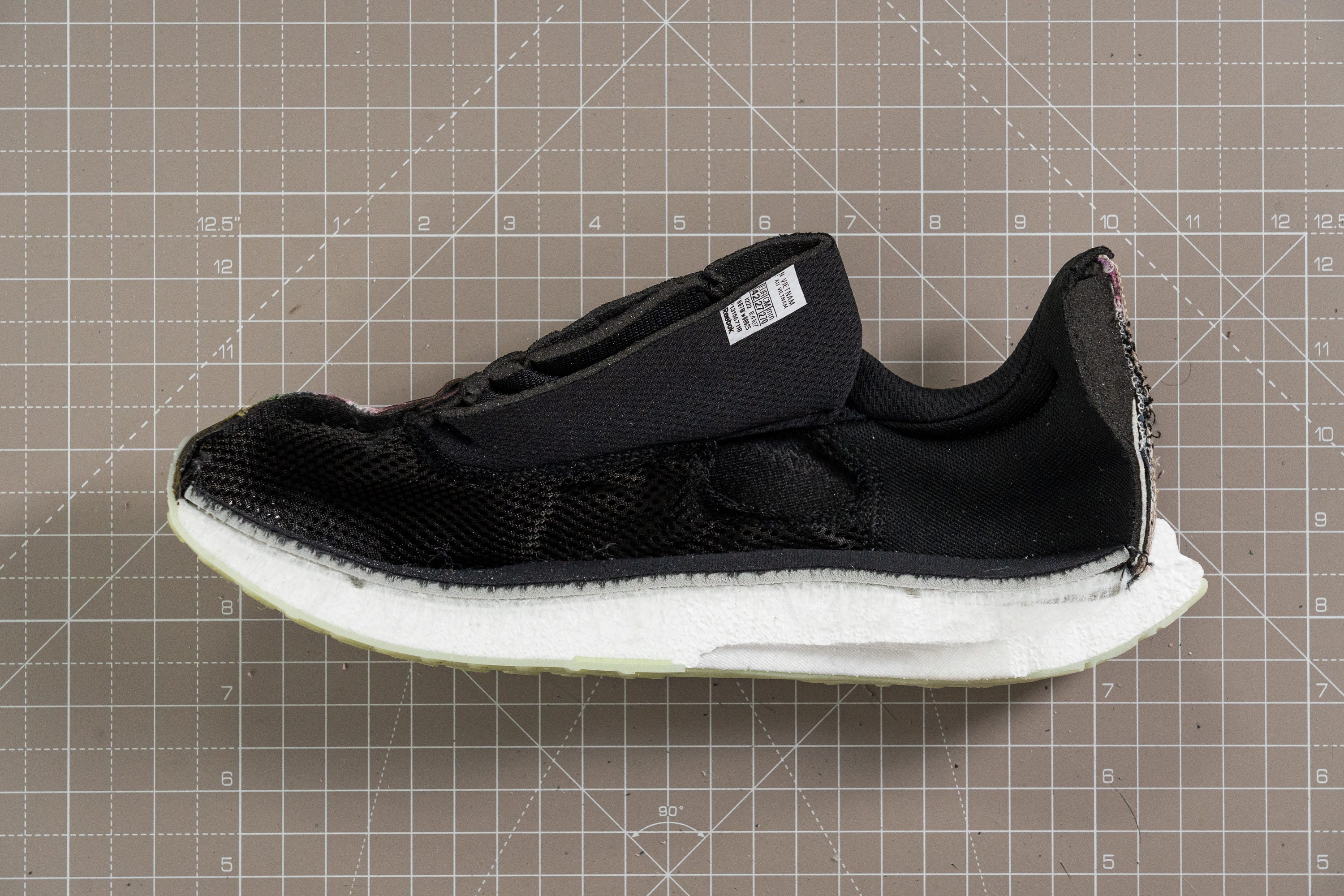
| Floatride Energy 5 | 6.0 mm |
| Average | 8.6 mm |
Midsole softness
We put the Floatride Energy foam under the durometer's scrutiny again, and it measured in at 26.5 HA.
It's important to clarify here—this TPU compound might not deliver the softness we ideally want for easy or comfortable runs, but its bounciness outdoes most of its head-to-head rivals. And it's fantastic for those who appreciate a firmer feel underfoot.

| Floatride Energy 5 | 26.5 HA |
| Average | 20.4 HA |
Size and fit
Size
Reebok Floatride Energy 5 fits true to size (22 votes).
Width / Fit
Reebok aimed to accommodate a wide variety of foot shapes globally. So, they've settled on a toebox with standard width, striving to please as many runners as possible, maybe with the exception of those with super-wide feet.
We found its broadest point to be 99.3 mm.
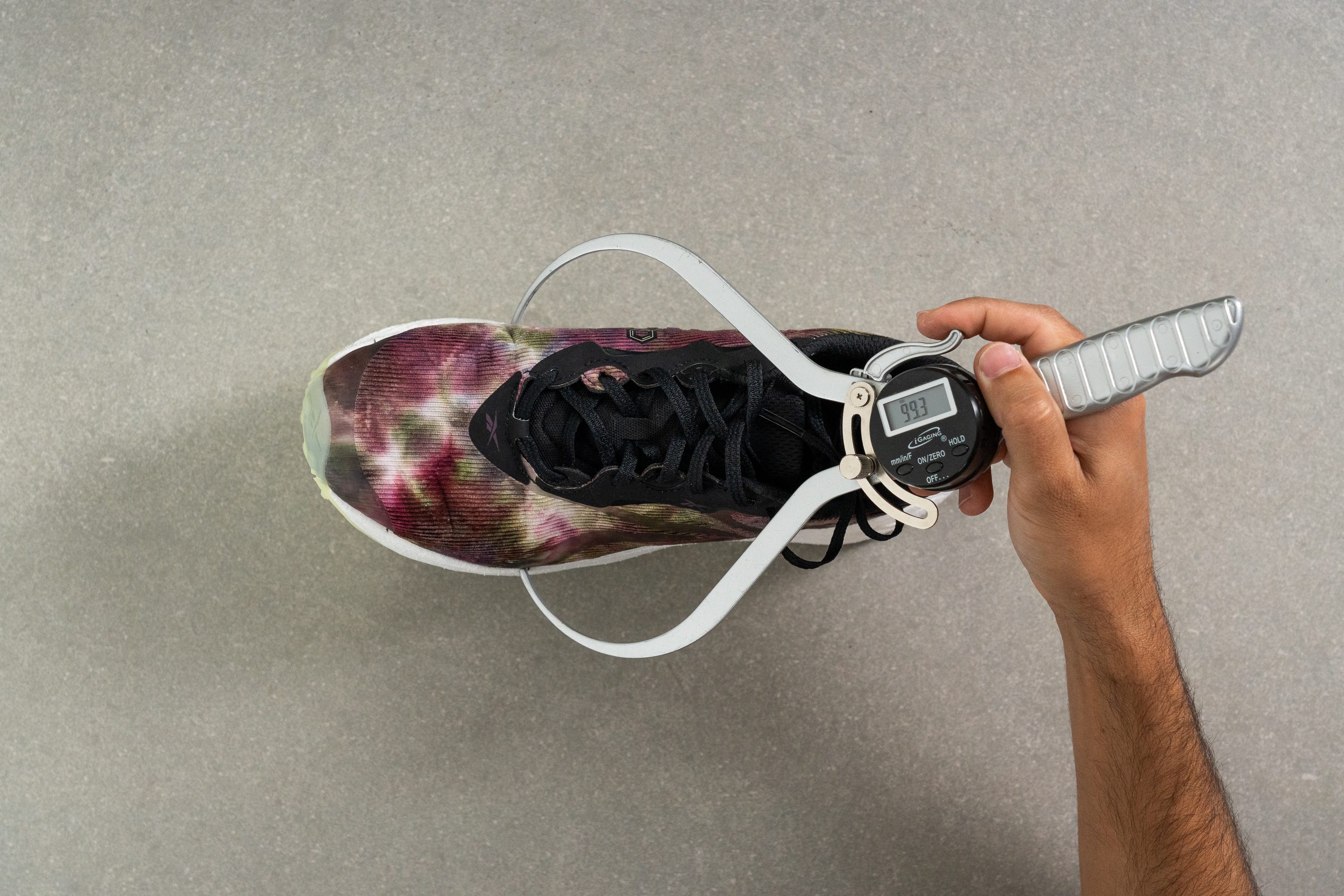
This test follows an older methodology, which is why you don't see recently tested shoes in the chart. Results from different methodologies can not be compared.
| Floatride Energy 5 | 99.3 mm |
| Average | 98.5 mm |
Toebox width
It's the same case with the space for the big toe. With a measurement of 77.1 mm, we believe it should comfortably accommodate nearly every feet out there.
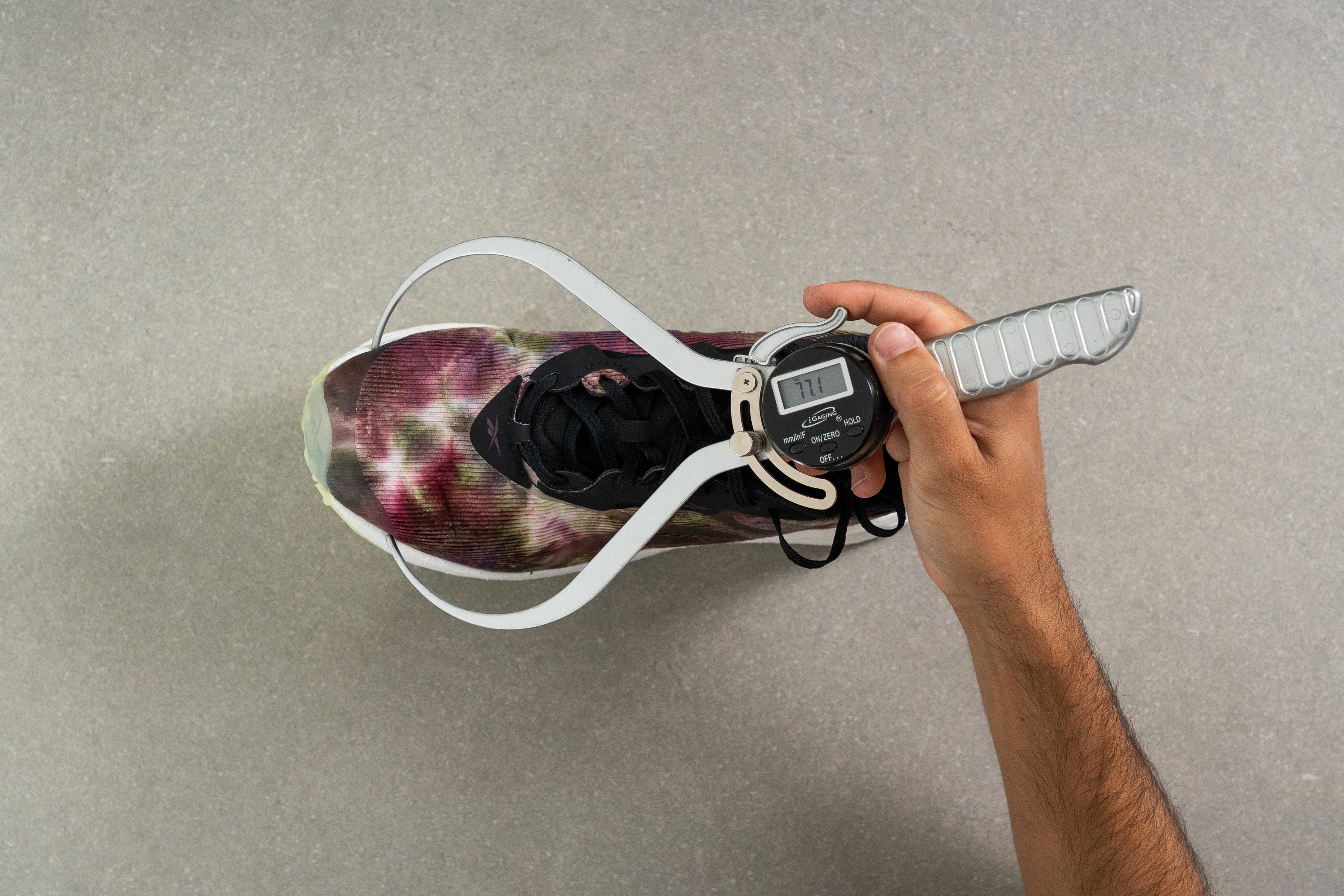
This test follows an older methodology, which is why you don't see recently tested shoes in the chart. Results from different methodologies can not be compared.
| Floatride Energy 5 | 77.1 mm |
| Average | 78.4 mm |
Flexibility / Stiffness
We've mentioned that this shoe is flexible, but it's always good to have lab-based data to back it up, right?
When we performed our 90-degree bend test, it only took us 18.2N of force to achieve the target flex point. This puts the shoe in the top 10% of flexibility among the shoes we've tested.
This test follows an older methodology, which is why you don't see recently tested shoes in the chart. Results from different methodologies can not be compared.
| Floatride Energy 5 | 18.2N |
| Average | 28.1N |
Stiffness in cold (%)
No major changes occur under cold temperatures, as we found almost identical values after putting the shoe in our freezer. We recorded it at 21.9N after repeating the previous test.
Just like with the midsole's firmness, the use of TPU foam ensures that cold weather doesn't impact the shoe's performance. It stays pretty much the same (+20.3%), which is a feature we typically find in pricier shoes like the Nike Invincible 3.
| Floatride Energy 5 | 20% |
| Average | 33% |
Weight
Weighing in at a mere 8.95 oz or 254 grams for a US size 9, the Floatride Energy 5 stands out as one of the lightest daily trainers on the market.
We believe that this impressive lightness indeed serves as one of the major selling points for this model.

| Floatride Energy 5 | 9.0 oz (254g) |
| Average | 9.3 oz (264g) |
Breathability
Our cutting-edge smoke-pumping test revealed a disappointing performance from the Floatride Energy 5. We noted minimal airflow emanating from the upper, leading us to rate it a disheartening 2 out of 5.
The lack of ventilation became even more evident in the next test. The light struggled to pass through the upper, cementing our initial impression of an inferior performance regarding breathability.
Our recommendation for the Floatride Energy 5 is that it's a shoe suitable for training only in cool or ideal conditions, not under hot circumstances.

We used our microscope for the final evaluation, and it corroborated this underwhelming result again. The mesh upper lacks ventilation holes and is not thin enough to enable effective airflow.
| Floatride Energy 5 | 2 |
| Average | 3.7 |
Stability
Lateral stability test
The FE5 is a nice shoe for a broad range of distances and speeds. And that's exactly what we expect from a versatile daily trainer—ability to manage nearly everything.
Yet, this one offers an added advantage of a stable ride, an attribute we genuinely appreciate.
Torsional rigidity
Striving for comfort, we find the Floatride Energy 5 impressively flexible—a quality we genuinely value and we rated at 2/5.
Why does this shoe afford such torsional flexibility? The reason is that its midsole is firmer than most, providing stability already. Therefore, there's no need to increase torsional rigidity, making the shoe more flexible and comfortable for cross-training or walking.
| Floatride Energy 5 | 2 |
| Average | 3.5 |
Heel counter stiffness
The shoe features some heel support that surrounds the bottom portion of our heel, both on the inside and outside. We rated it at 2/5 in the lab.
Additionally, we found plenty of cushioning in the heel collar, which is designed to prevent irritations in the Achilles tendon.
| Floatride Energy 5 | 2 |
| Average | 2.9 |
Midsole width - forefoot
Just as we mentioned about the torsional rigidity, the same concept applies here. Since the shoe is already quite stable, Reebok didn't felt the need to widen the landing platform excessively.
We recorded a maximum width of 109.8 mm, which might be considered narrow by today's standards. However, for this shoe, it's entirely adequate.

| Floatride Energy 5 | 109.8 mm |
| Average | 114.4 mm |
Midsole width - heel
Reebok truly went all in when it comes to the heel design, clearly aiming to provide a secure and comfortable experience for heel strikers.
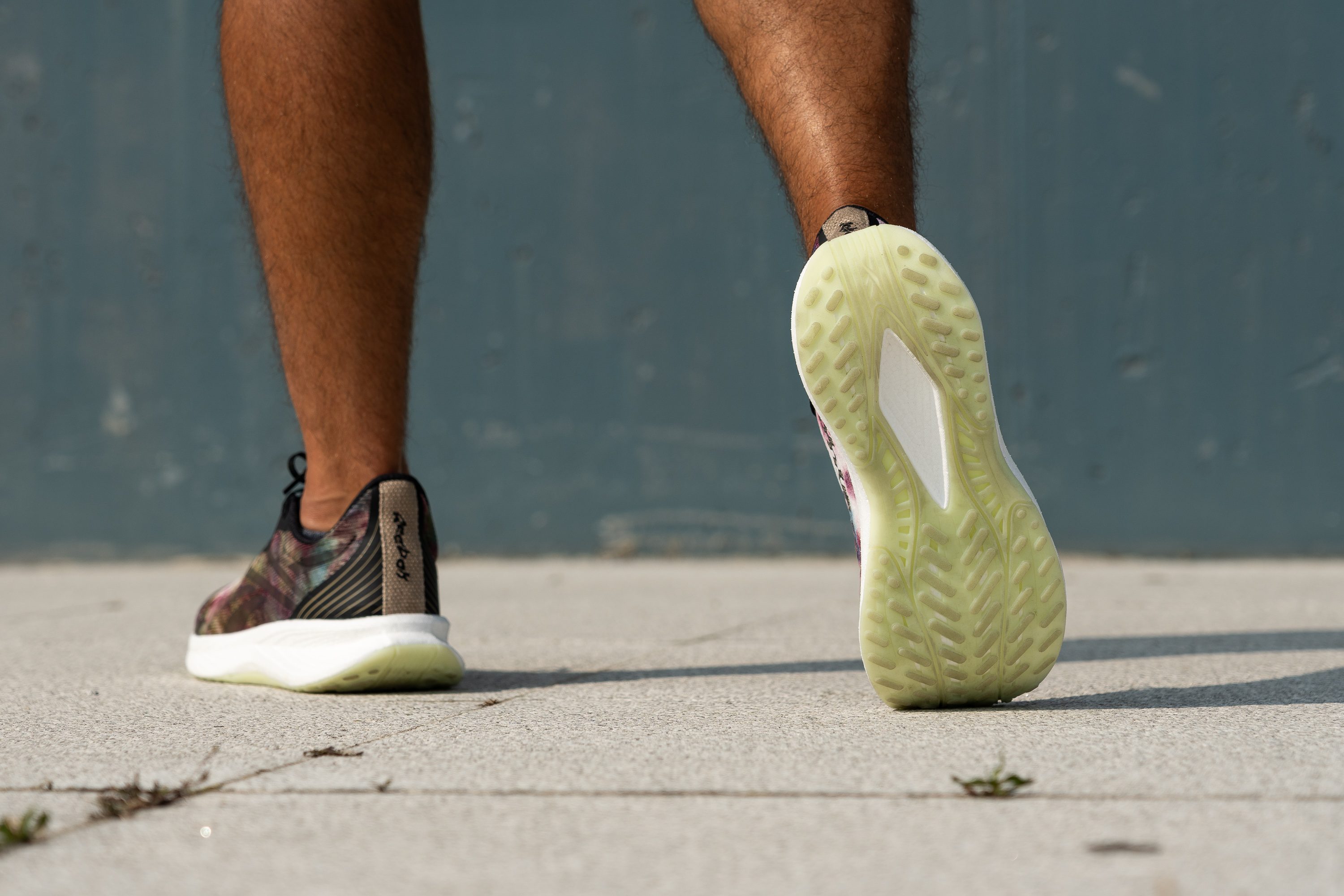
Measuring at a generous 94.7 mm, the heel area stands out as notably wider than almost any other daily trainers. For instance:
| Shoe | Midsole width in the heel (mm) |
| Reebok Floatride Energy 5 | 94.7 |
| Nike Pegasus Turbo | 84.1 |
| ASICS Gel Pulse 13 | 86.8 |
| Nike Pegasus 40 | 83.7 |
| Saucony Kinvara 14 | 87.5 |
| Under Armour Charged Assert 10 | 91.3 |
| Saucony Guide 16 | 85.8 |
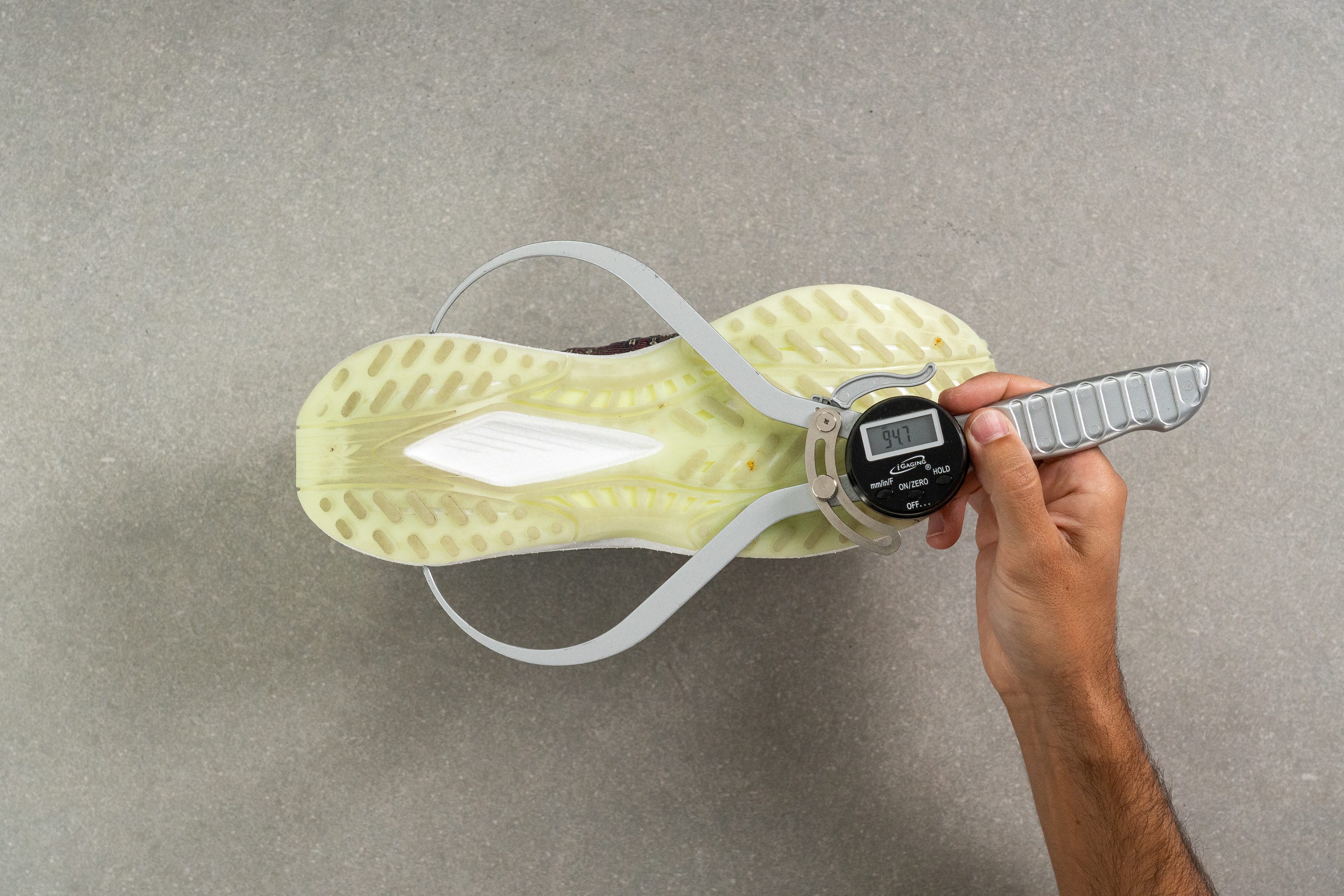
| Floatride Energy 5 | 94.7 mm |
| Average | 90.7 mm |
Durability
Toebox durability
The mesh Reebok employs is undoubtedly soft and comfortable, but it leaves much to be desired in terms of toughness.
When we put the shoe through our standardized durability test with the Dremel, we found ourselves obliged to assign the lowest possible rating—a disappointing 1 out of 5!

| Floatride Energy 5 | 1 |
| Average | 2.6 |
Heel padding durability
However, things take a turn for the better when it comes to the heel. Here, Reebok wisely opted for a more robust material.
This tougher fabric offered greater resistance during our Dremel test, earning a 3/5. This places it ahead of many competitors in the market and it seems clear that improvements are on the horizon!
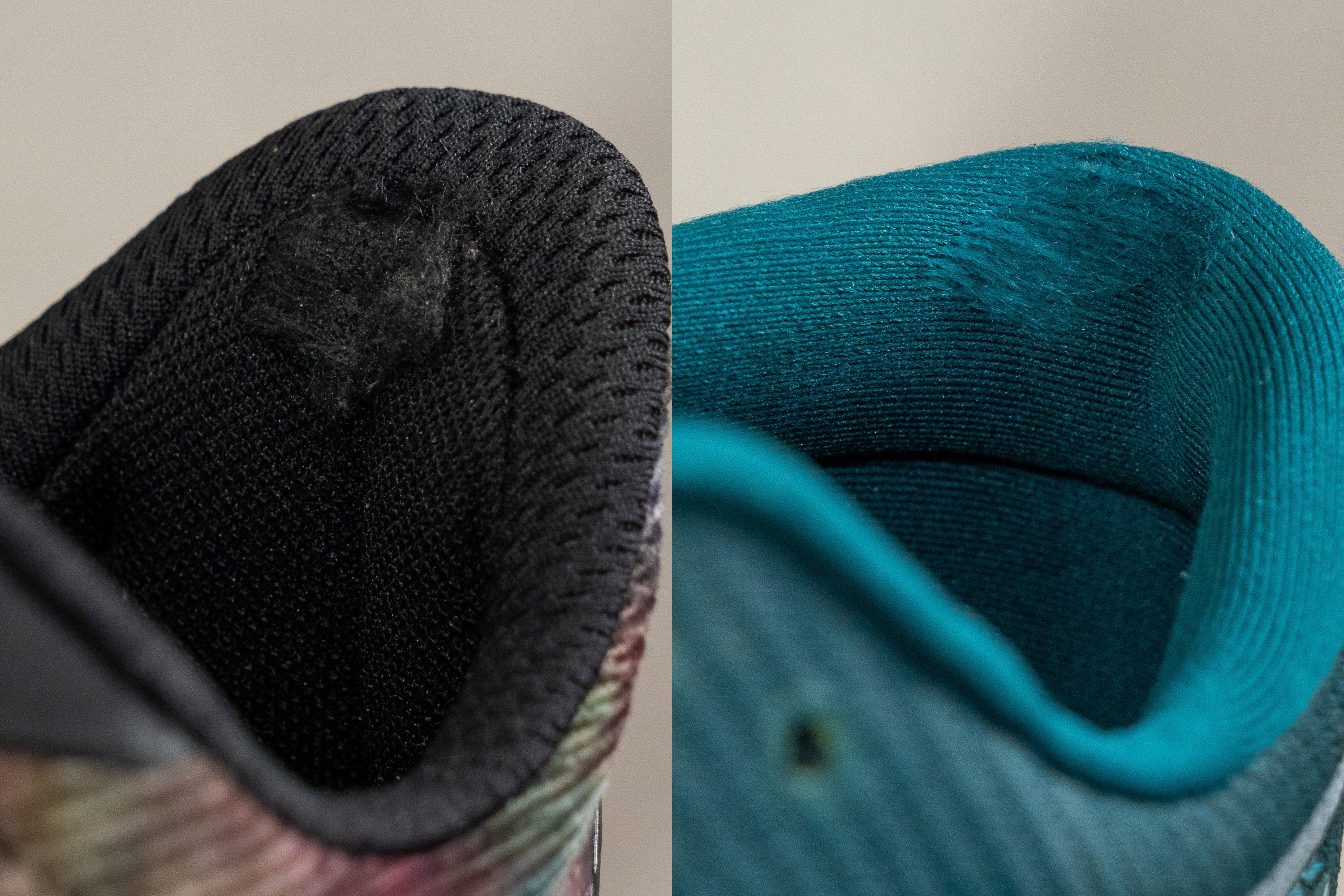
| Floatride Energy 5 | 3 |
| Average | 3.4 |
Outsole hardness
Shifting our attention to the outsole, our durometer test presented us with an average result.
With a score of 80.5 HC, this is a great balance between lasting durability and reliable grip.

| Floatride Energy 5 | 80.5 HC |
| Average | 79.2 HC |
Outsole durability
As we mentioned earlier, this isn't the most resilient rubber you'll find in the market, yet it proves its worth commendably.
To put it in perspective, after torturing the outsole with our Dremel in the lab, we were only able to wear down a mere 0.84 mm. Trust us, this is a truly impressive result!
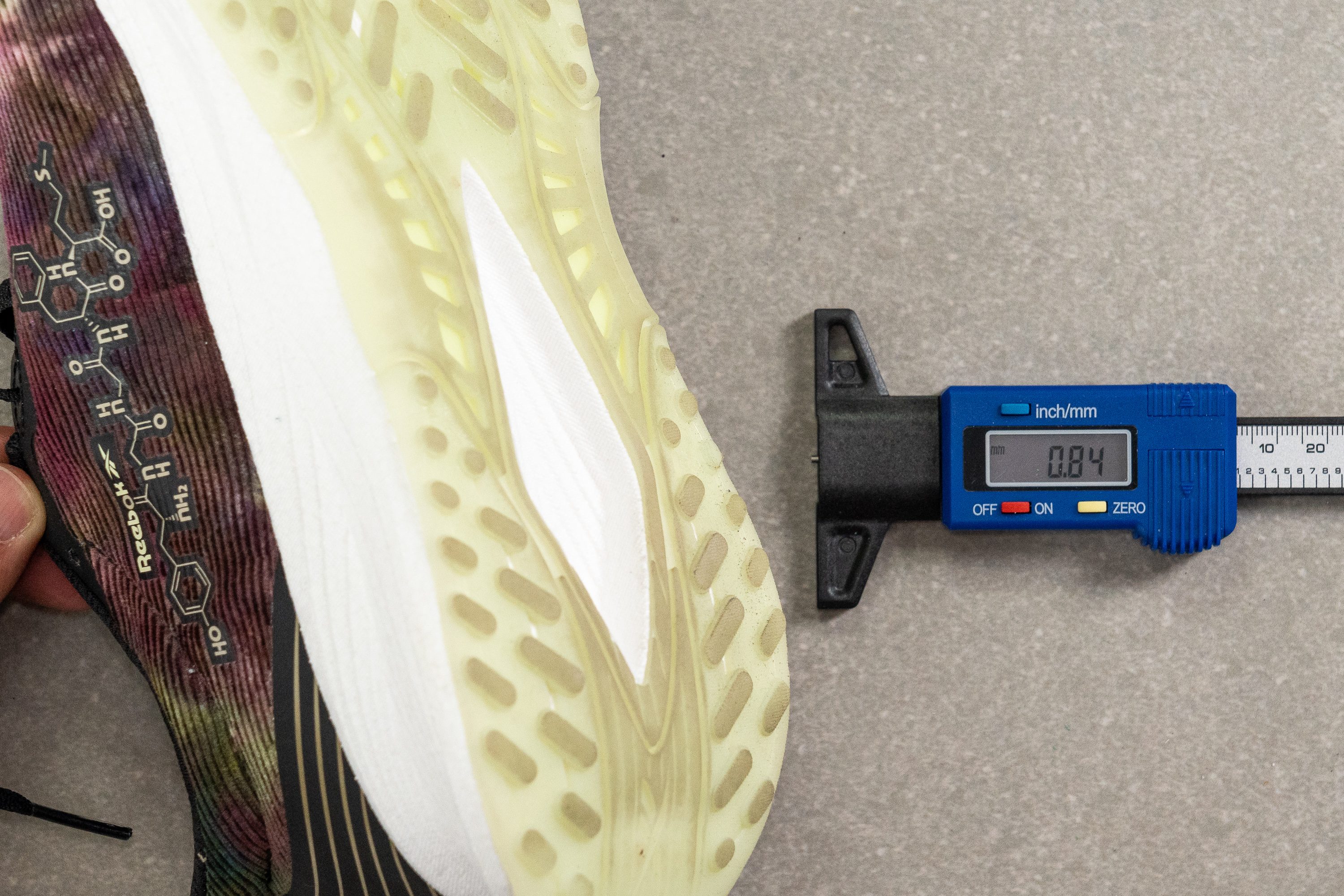
| Floatride Energy 5 | 0.8 mm |
| Average | 1.1 mm |
Outsole thickness
Considering the outsole's thickness stands at 3.1 mm, we believe no runner should face durability issues with this outsole.
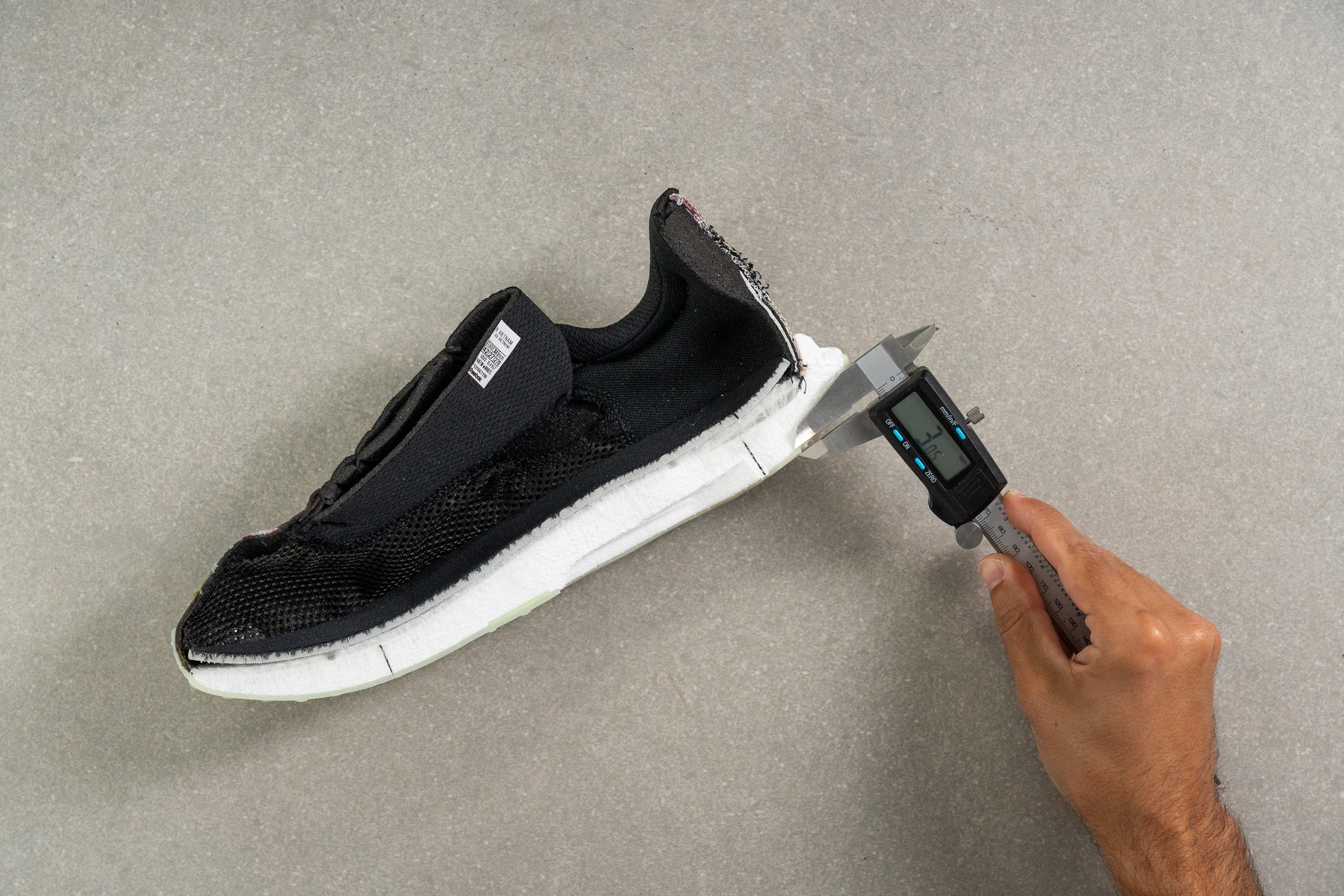
| Floatride Energy 5 | 3.1 mm |
| Average | 3.2 mm |
Misc
Insole thickness
We think that there are no real issues with the insole.
At 3.7 mm, it provides ample padding, offers comfort, and serves effectively as the initial shock absorber during our runs.
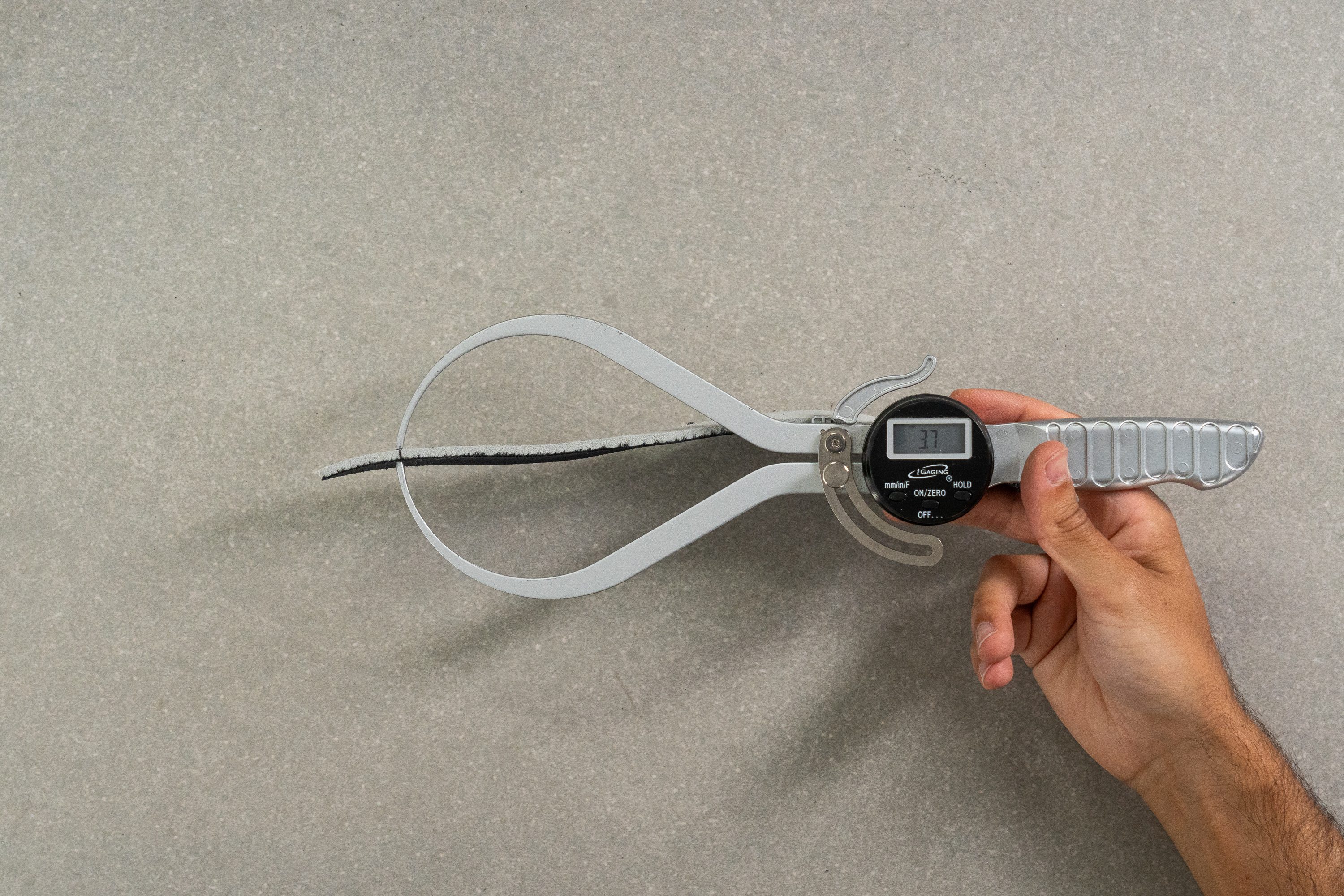
| Floatride Energy 5 | 3.7 mm |
| Average | 4.5 mm |
Removable insole
We didn't run into any issues when we tried switching out the insole with one from another shoe or when inserting custom orthotics. Everything fit just fine inside this Reebok.
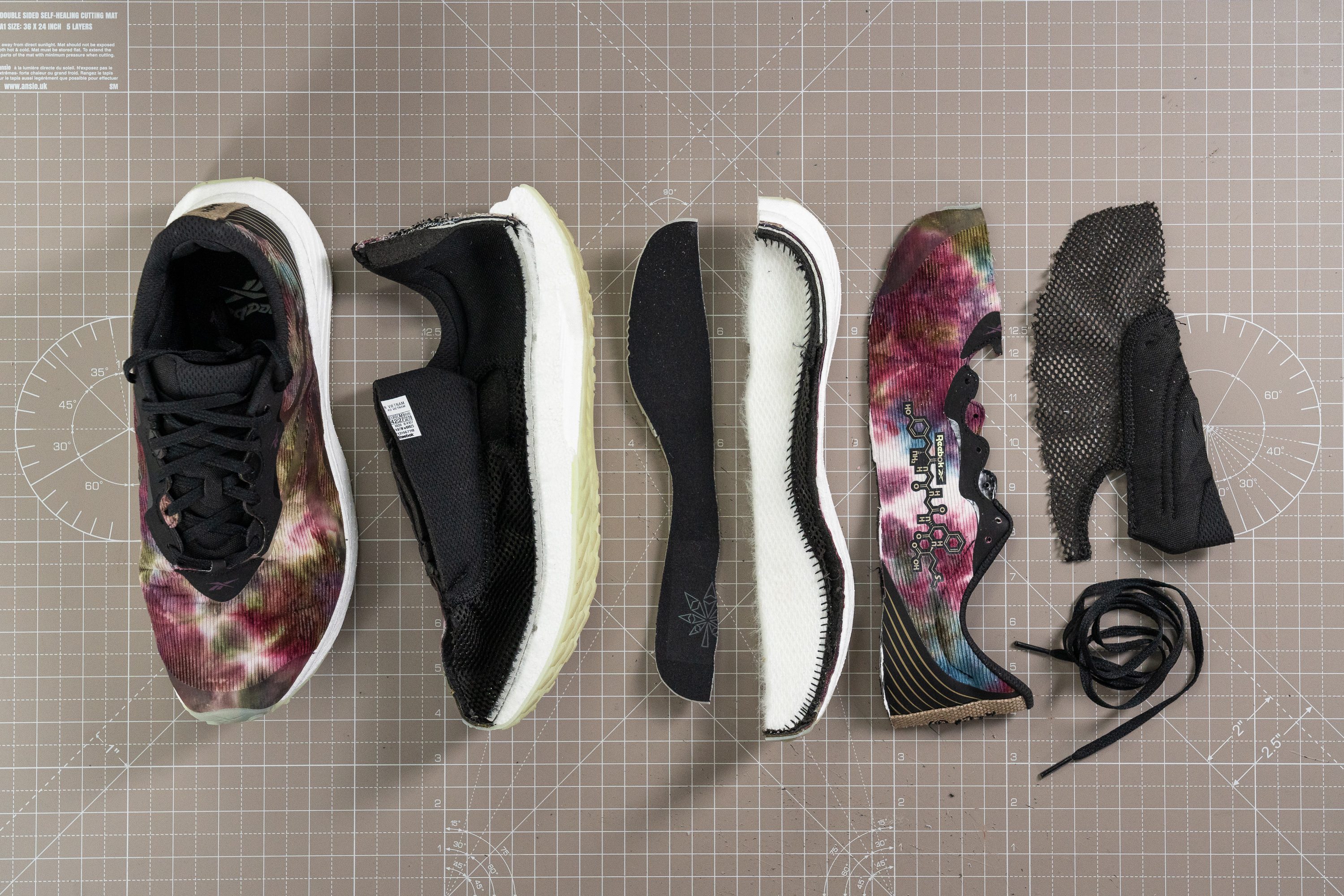
| Floatride Energy 5 | Yes |
Midsole softness in cold (%)
After a 20-minute exposure to freezing temperatures, the midsole, with its reading of 28.8 HA, maintains its moderately firm feel.
One standout feature of this midsole is its consistency in cold weather—a major plus for winter training. Rarely do we find this behavior in shoes within a similar price point ($110).
This unique feature is due to the midsole's Floatride Energy foam, which is made from TPU rather than EVA. As a result, the midsole's characteristics remain largely unaffected by temperature changes (8.5%), a point we've covered in our advanced guide.
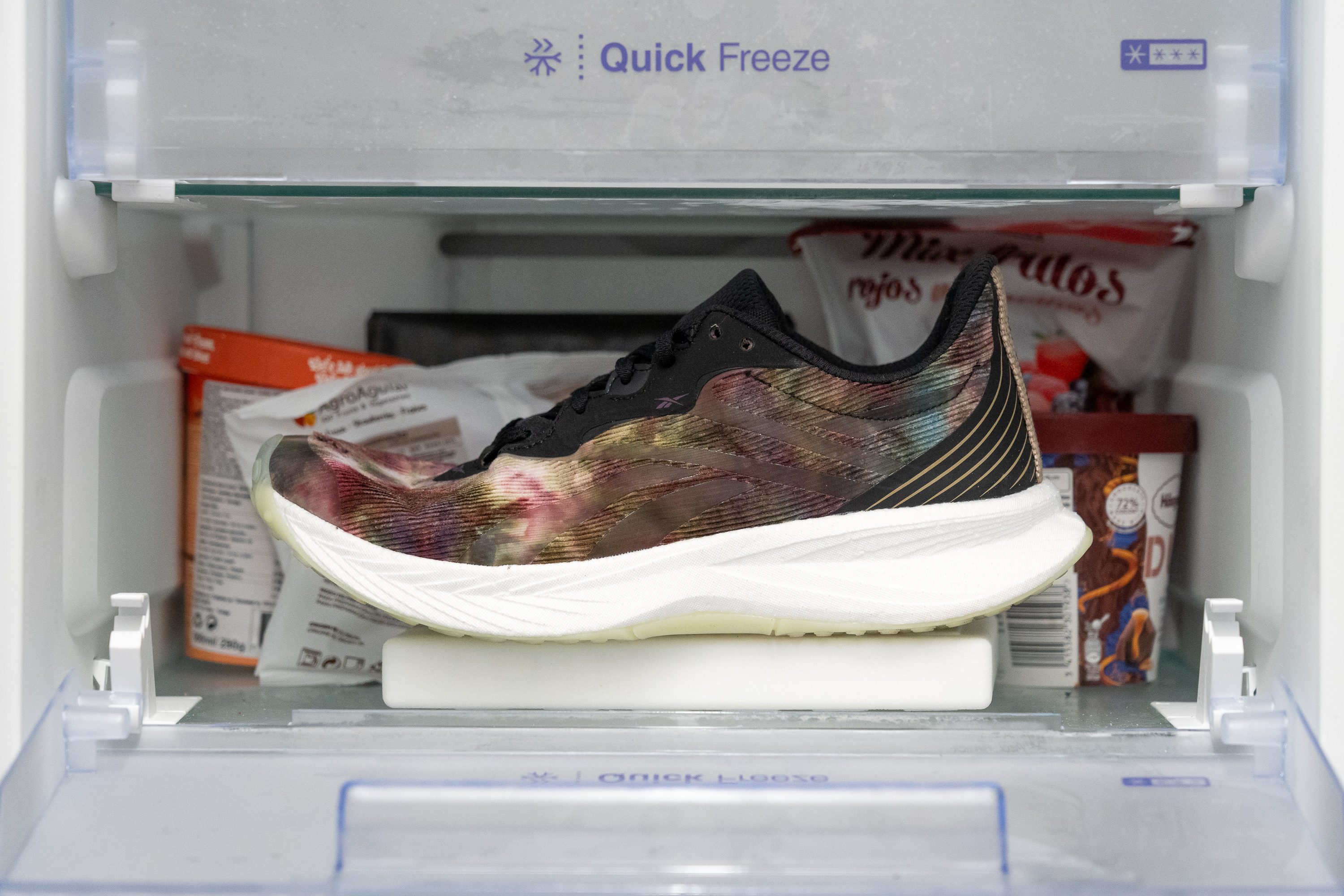
| Floatride Energy 5 | 9% |
| Average | 24% |
Reflective elements
The Floatride Energy 5 from Reebok falls flat in terms of any reflective elements—there are simply none.
This is an aspect where Reebok really needs to step up their game for the next version of this daily trainer.
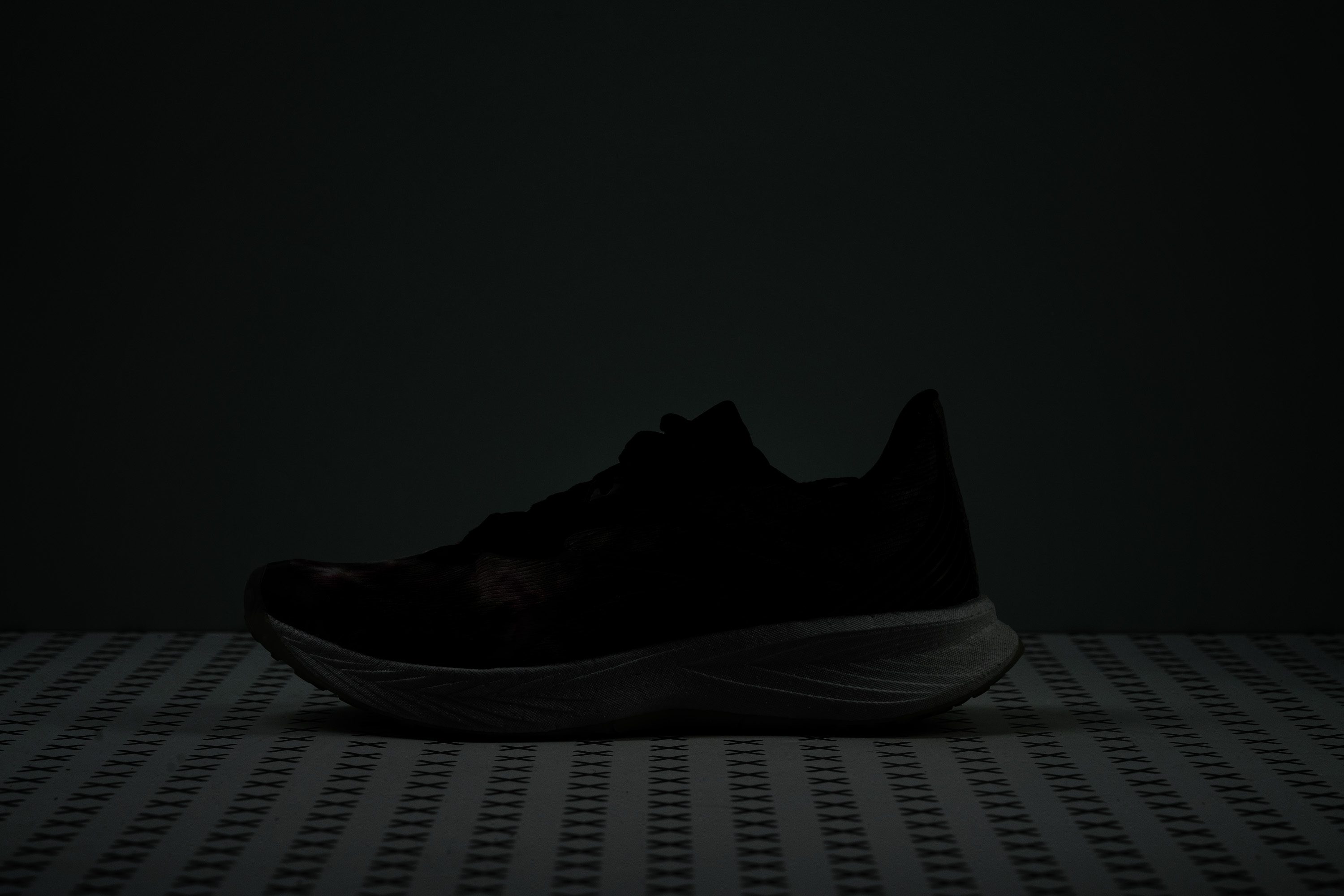
| Floatride Energy 5 | No |
Tongue padding
The tongue of the shoe is quite padded, measuring up to 8 mm. This might sound like a plus at first. However, it also makes the fit a little snug around the midfoot.
The additional padding on the tongue is what makes for a snugger fit, especially for those with larger insteps.
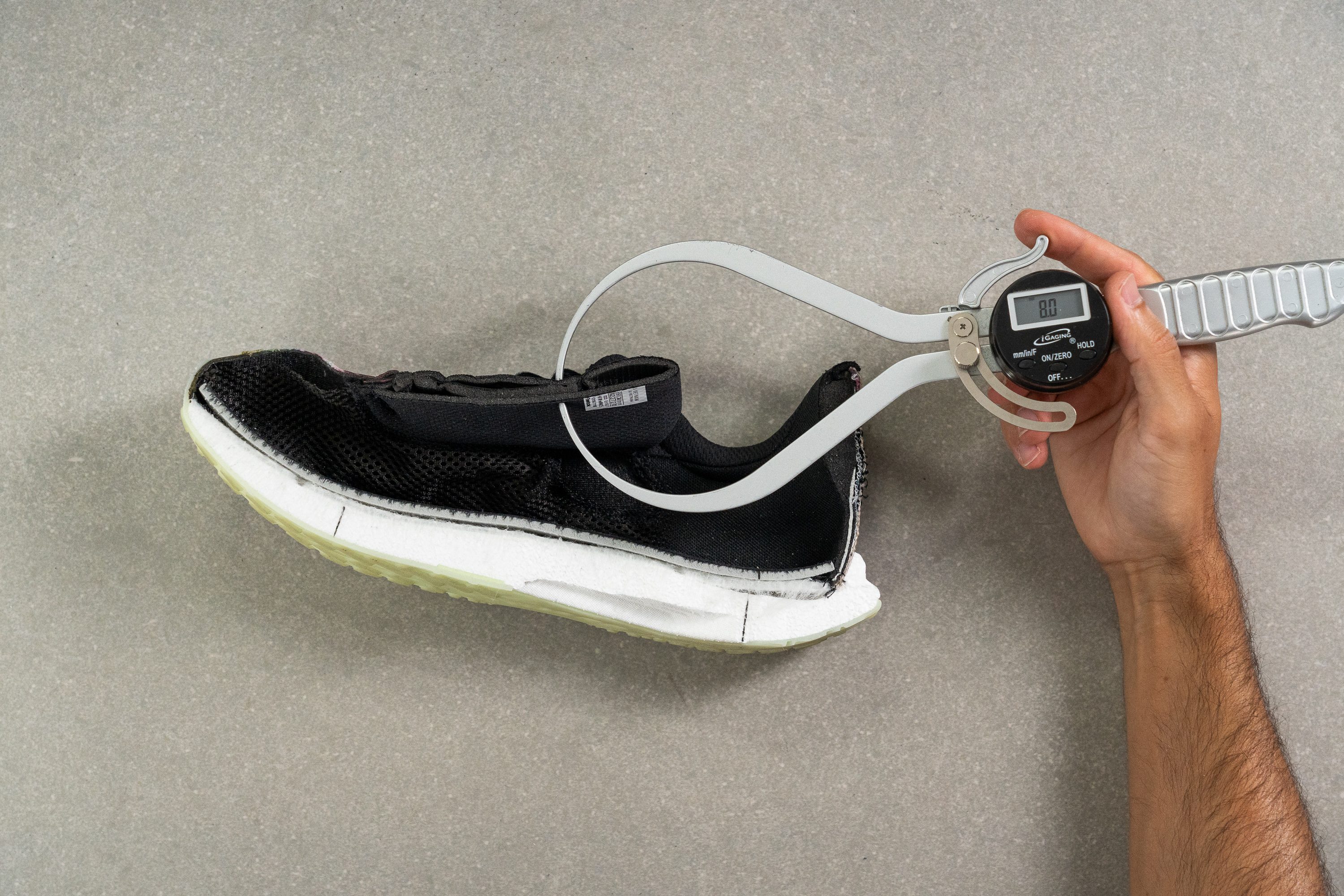
| Floatride Energy 5 | 8.0 mm |
| Average | 5.8 mm |
Tongue: gusset type
The tongue of the shoe is semi-gusseted, a feature that we wholeheartedly appreciate in a daily trainer.
It's the perfect balance—not overly restrictive, yet not too loose either. We love it!

| Floatride Energy 5 | Both sides (semi) |

